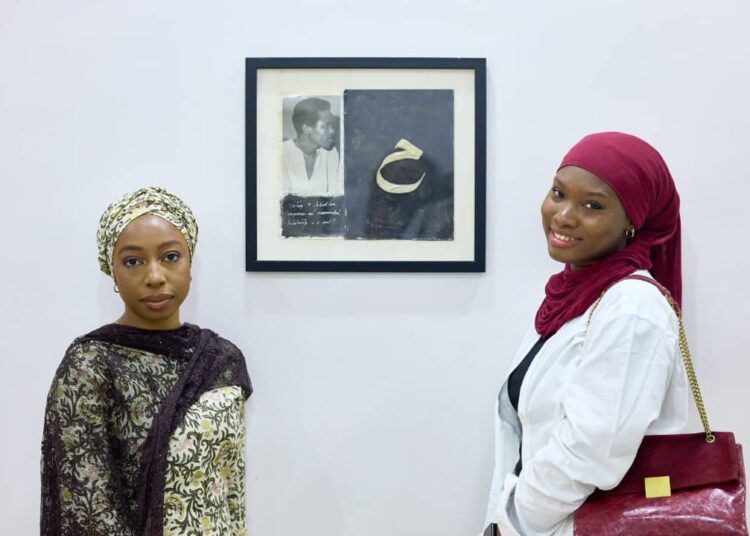Curator of ‘In With The Old: Repurposed’, Aida Oluwagbemiga, a solo exhibition by artist, Idris Abdulwahab, has said the body of work holds an important space in the current genre of sustainable art practice.
She made the remark at the exhibition which she curated in Abuja titled; “In With the Old: Repurposed,” at the Dike Chukwumerije Creative Center.
The exhibition being Abdulwahab’s first solo exhibition consists of eight works of art where he repurposed old materials to make art.
A Senior Communications Executive, writer and policy researcher, with a degree in history and diplomacy, Oluwagbemiga believes the exhibition comprised of several old materials, pictures, newspaper, naira notes, and paint recycled into eight sustainable works of art, successfully got its audience pondering on their personal and collective history.
According to her, “This body of work by Abdulwahab stands out because he has been able to create something quite important from decaying pictures, old notes, old newspaper clippings, old paints and more.
“In the current landscape of recycling, the art work holds an important place and it was just beautiful to see that.
“As the curator, I was transfixed by this ode to the past and I would like to see more creatives make history relevant through interesting means such as he has.”
Oluwagbemiga revealed that she has always been passionate about how people interact with history, and have over the years tried to use storytelling methods such as curating to get people interested in history.
She maintained that the exhibition was a perfect way to combine history, culture, calligraphy and creating the personal history wall to enable others interact with Abdulwahab’s body of work.
Project Manager at Genzify Africa, photographer and co-curator of the exhibition, Matthias Ojo on his part said “My experience co-curating this exhibition “In With the Old: Repurposed” was a deeply meaningful experience. It was my first time working on an exhibition, and even though I felt nervous at the start, I ended up learning so much and owning it because it felt surreal for me.
“I worked closely with Aida, the lead curator, and got to be part of everything from selecting the artworks to planning the installation and diving into research that helped shape the story we wanted to tell.
“Seeing the final outcome, and how well it was received, was incredibly rewarding. The turnout was beyond what I expected, and I’m genuinely proud of how it all came together. This experience has definitely sparked a stronger passion for curatorial work in me, and I’m excited to keep exploring this path,” he said.
Artist and Educator Zara Medugu, who shared her experience about the exhibition, said it felt as though the artist was very intentional with his pieces. “Although I don’t speak Arabic, I was able to get lost in the pieces, and ascribe meaning, pondering – “Who are these people, their faces are covered? Where are these documents leading to? What is the story, what is the actual tale woven through these pieces”? I saw a lot of motifs of hearts, families and people gathering, a lot of quote about life. But over-all, I enjoyed myself.”
On her part, Founder of Yonki Abuja, Zainabu Ilham Malabu, said “The exhibition was thoughtfully curated which was evident in the wall that showcased momentus from these thought past, photos, old naira notes and even someone’s dad driver’s licence. It was an overall 10-10 experience.
“I loved the atmosphere and the people I met. I think having exhibitions like these that keeps us grounded to our past is very important to see how we can bring in our history and retell stories that have importance to us,” she added.






